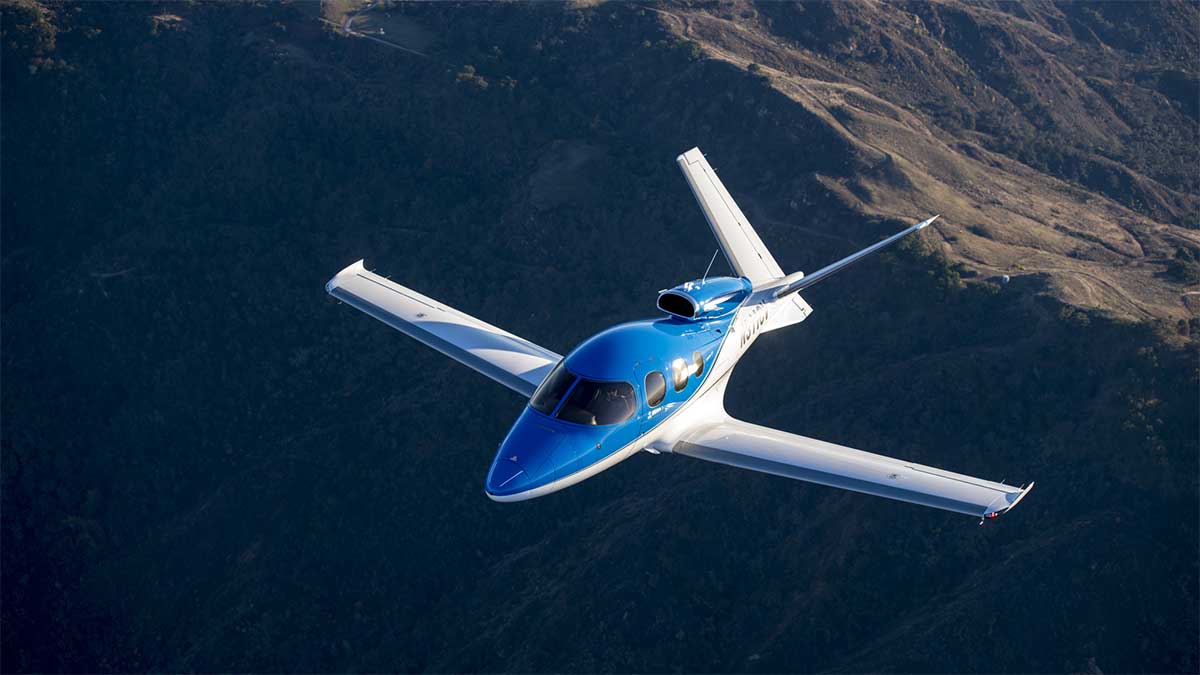
The second-generation Cirrus Vision Jet features a number of improvements customers will immediately appreciate. Cirrus Aircraft
Cirrus Aircraft wasted little time in giving its engineers the task of enhancing the Collier Trophy-winning single-engine Vision Jet, and the result of that company-wide effort is the Generation 2 version of the SF50 officially unveiled today.
The biggest changes to the 2019 G2 iteration of the Vision Jet are the addition of autothrottle to a new Garmin Perspective Touch+ flight deck, a max altitude increase to FL 310, improved high-altitude performance of the Vision’s single Williams jet engine and a multitude of enhancements throughout the cabin, including an easily removable center console between the improved main seats that can be stowed in the baggage compartment when not in use.
Price for the G2 Vision Jet is now $2.38 million for the base version or $2.75 million for the Elite trim level, which adds premium luxury and connectivity options. Cirrus is also now offering an Xi version of the Vision Jet, similar to the Xi trim line for the SR22. Cirrus is now on the sixth generation of the SR22.
The max altitude increase means the G2 Vision Jet is now approved for operations in RVSM airspace, and the manufacturer said it will assist buyers with the paperwork exercise of gaining the approval from the FAA.
Cirrus also worked with Williams to increase engine thrust above FL 240, and the result is a top speed of 311 ktas at FL 280 or 305 ktas at FL 310, with a corresponding reduction in fuel burn at the higher altitude, which results in a range increase of 100 nm or an extra 170 pounds of payload on an 800 nm mission.
Cabin altitude at FL 310 is the same 8,000 feet as it was at FL 280 in the first generation Vision Jet, and Cirrus has employed passive sound deadening techniques to quiet the cabin noise level in cruise flight. The Garmin G3000-based Perspective Touch+ cockpit incorporates faster computer processors and brighter screens.
“The Cirrus Aircraft story is one of relentless innovation,” said Pat Waddick, President, Innovation & Operations. “Much like the last 20 years of re-imagining the SR Series with constant improvements to performance, safety and comfort, the G2 Vision Jet is the culmination of that same spirit of innovation. This aircraft is yet another game-changer in personal aviation and it’s made possible by the world-class team we have at Cirrus Aircraft.”
The Vision Jet is also now Part 135 approved for operators seeking to offer the seven-seat airplane as an air taxi. New batteries in the G2 iteration improve engine starting performance and eliminate cold weather starting limitations. Wider seats, improved carpets and the new storage options and stow-away tables in the center console should make the airplane attractive for short-haul commercial ops and personal owners alike.
New Garmin Flight Stream capabilities simplify the pilot’s experience by creating connectivity between a personal mobile device and the flight deck, enabling a range of wireless enhancements including flight plan transfers, database updates, text messaging and more, Cirrus noted.
Cirrus started working on the G2 improvements not long after the original Vision Jet gained its certification in 2016. At the top of the wish list was the addition of autothrottle, one of the last remaining pieces of the automation puzzle that can greatly reduce pilot workload in busy environments. The Garmin autothrottle system in the Vision Jet includes a number of built-in protection modes to guard against inadvertent stalls or overspeeds. The autothrottle can be engaged at 400 feet agl after takeoff and disengaged at 200 feet on approach, Cirrus said.
Look for a full report on the G2 Vision Jet in an upcoming issue of Flying.

Sign-up for newsletters & special offers!
Get the latest FLYING stories & special offers delivered directly to your inbox






